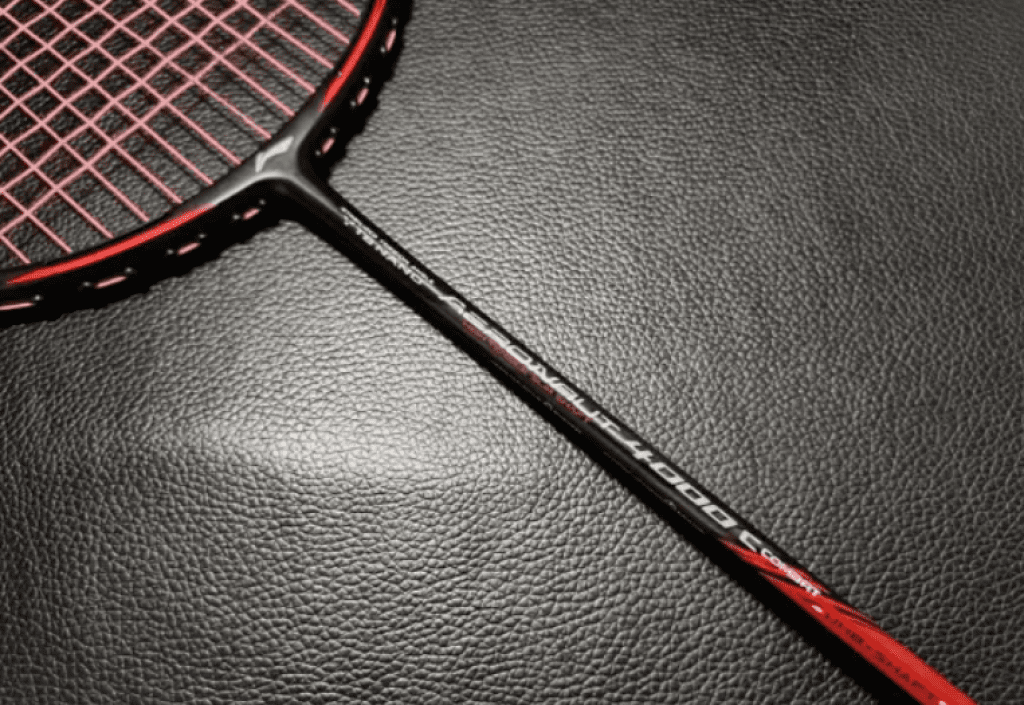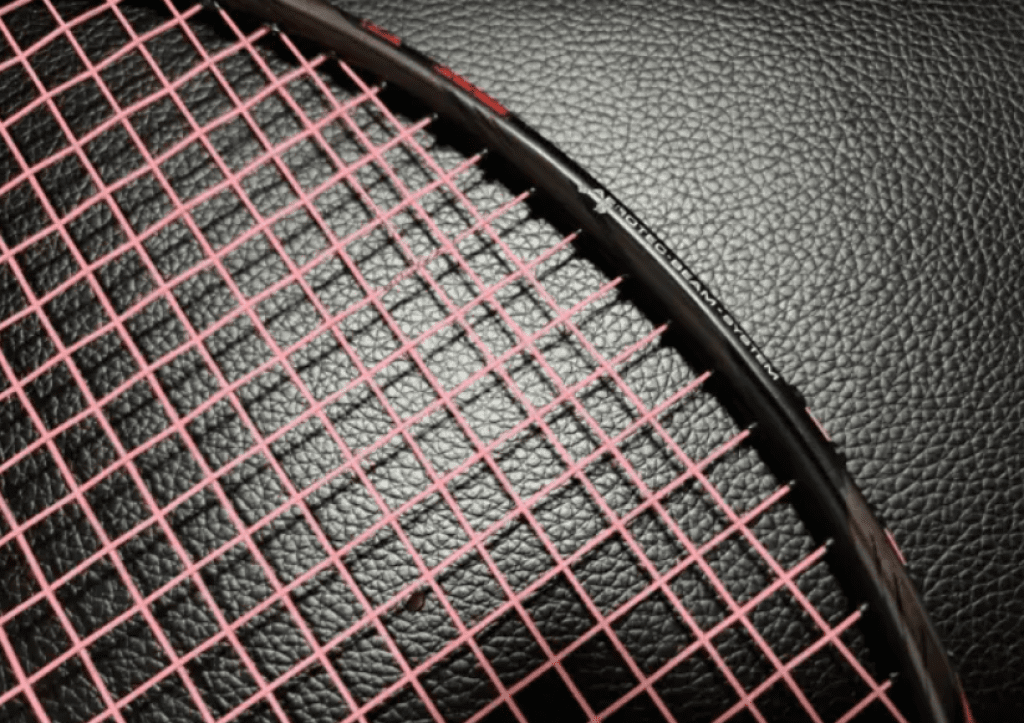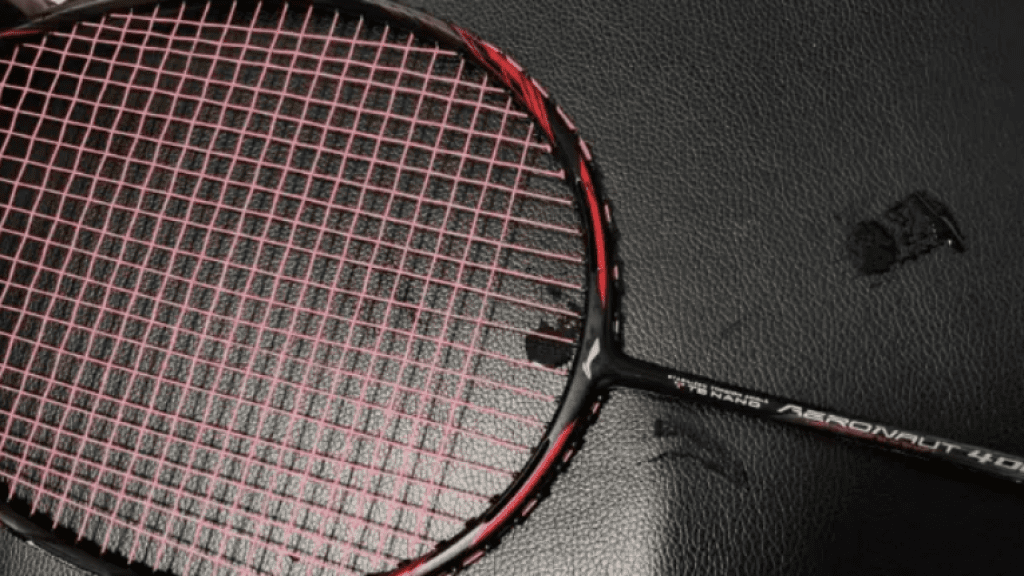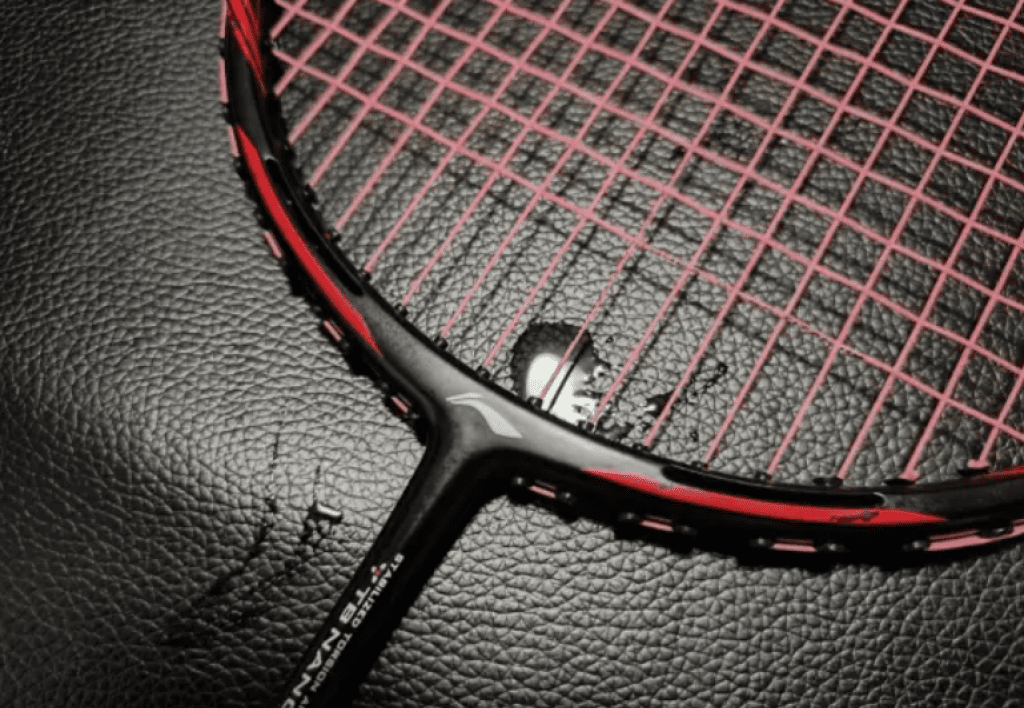The “C” in “C for Combat” is generally regarded as a tuning version in the mid-generation Li-Ning products that emphasizes downward attacking power, and it doesn’t have much to do with the release sequence. For the AERONAUT 4000C, which was launched in 2017 alongside the AERONAUT 4000 as a mid-range model, it was designed with an attacking racket mindset from the start. Above it is the AERONAUT 5000, which I have used, and it genuinely has a strong downward attacking feel and offensive performance.
There are two reasons for this: First, it was released earlier, and second, it was positioned between two numerical models. Rackets that are caught in this “in-between” position often face unclear positioning and marketing challenges.

Specifications:
- 3UG5
- Stripped weight: 88.81g
- Balance point: 311mm
- Shaft length: 218mm
- Stiffness: Medium
- Box frame
- AERONAUT at 4 and 8 o’clock positions
- 72-hole string bed
- Grooves at 9-3 o’clock positions
- Warranty: 30lbs
- String tension: 25-26lbs (BG65TI)
As expected for a racket released around the same time, the AERONAUT 4000C differs from the AERONAUT 4000 only in the color of the water decals, changing from the latter’s golden yellow to red to highlight the racket’s aggressive nature. The details in appearance and technological applications do not need further elaboration, as even the shaft may not have been adjusted and was directly carried over from the AERONAUT 4000. However, after returning to the standard length of 675mm (note the distinction between standard and long length), it does look a bit more pleasing.

This should be a typical 3U, head-heavy racket. Within the AERONAUT series, which primarily focuses on balance, you could indeed consider the 4000C as an attacking racket based on its specifications. However, although the 4000C does feel somewhat heavy when first picked up, I found that it became much lighter and quicker after warming up, similar to the AERONAUT 9000, which looks heavy but doesn’t feel heavy in use. Even though it’s marked as 3U, I suspect the empty weight is just barely 85g. So, compared to the AERONAUT 5000, it still feels more like the AERONAUT 4000B.

Moreover, unlike the AERONAUT 5000, the 4000C has a slightly higher stiffness, so the “sweet and smooth” feel I experienced with the 5000 is somewhat diminished with the 4000C. During warm-up with clears, I didn’t feel much feedback from it. The elasticity is good, the drive is friendly, the sweet spot is consistent, the power delivery is smooth, the shot placement is acceptable, the shuttle release is stable, but my ears got a bit tired of the same sound.
The 4000C’s attacking performance is decent, capable of producing high shuttle speed in smashes, but it doesn’t give a winning feel—the smashes aren’t powerful enough. Even though the “C” suffix in Li-Ning’s previous generation products typically indicates a tuning more focused on offense, using the 4000C felt similar to using the AERONAUT 600C, which is also relatively balanced. However, the AERONAUT 600C has a stiffer shaft and a more decisive shuttle release. When compared to the AERONAUT 300C, the 4000C does feel lighter, and it’s hard to say which of the two has superior attacking efficiency.

At the same time, I’m not sure why I kept hitting the net during some perfect smash opportunities at the start. It could be due to the lower string tension or possibly an issue with the racket’s torsional resistance—the former seems more likely. Who knows how much tension loss has occurred?
During drives and blocks, the delay in shuttle release is less noticeable than with the AERONAUT 4000, and the racket’s swing weight didn’t significantly compromise its maneuverability. In fast-paced exchanges, as long as the racket is set up in time, it can easily follow through to the next shot, although the recovery speed of the long shaft can be a limiting factor. So during the trial, I wasn’t too worried about being targeted at my body and could focus more on following up at the net.
In defense, the racket can reliably block every smash from the opponent, but in backhand returns, the escape efficiency isn’t very high, likely due to the shaft’s elasticity and the swing weight.

Lastly, I initially thought it might be more suitable for singles, especially after stringing it with BG65TI, but its weight makes it a bit challenging for men to use in singles—maybe women could manage better. I was surprised that my experience with the racket didn’t match the reviews, where most opinions aligned with my expectations before the trial. Did I improve?
In any case, this is a relatively user-friendly entry-level AERONAUT racket. There’s no need to feel intimidated by the “C” suffix. But if I had to choose among the three brothers, I would still prefer the AERONAUT 4000B. The AERONAUT 4000 trilogy concludes here.

Leave a Reply